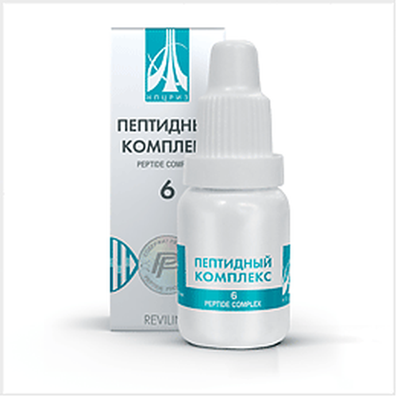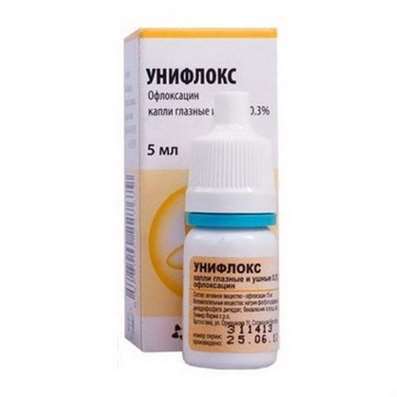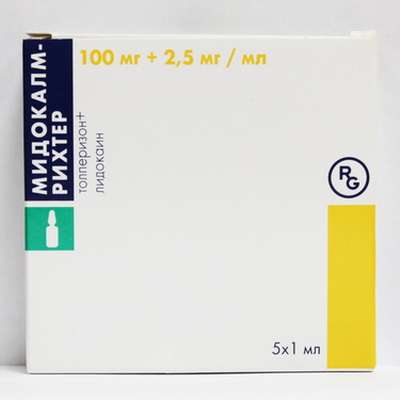Tocopherol (vitamin E)
15 Jan 2017
Vitamin E (tocopherol) is the liposoluble vitamin which is an important antioxidant. In the nature exists in eight various forms (a α-tocopherol, a γ-tocopherol and a δ-tocopherol) differing in biological activity and the functions executed in a body.
Vitamin E in food. Tocopherols contain in the basic in vegetable products. Not refined vegetable oils are richest with them: soy, cottonous, sunflower, peanut, corn, sea-buckthorn. Most of all vitamin active tocopherol in sunflower oil. Vitamin E contains practically in all products, but especially there is a lot of it in grain and bean sprouts (sprouts of wheat and rye, peas), in vegetables - asparagus cabbage, tomatoes, salad, peas, spinach, a parsley tops of vegetable, dogrose seeds. Quantities contain in meat, fat, eggs, milk, beef liver.
Vitamin E is very resistant, isn't blasted by either effect of alkalis and acids, or boiling, or warming (maintains warming to 200C for 3 hours). Thus when cooking, drying, conservation and sterilization remains.
Biological effects of vitamin E
Tocopherol well influences work of sexual and some other glands, restores genital functions, promotes fetation during pregnancy and the newborn child.
Is natural antioxygenic agent, interferes with oxidation of vitamin A and well influences its accumulation in a liver.
Interferes with development of processes of formation of free radicals and peroxides of fatty acids, oxidizing damage of lipids of membranes and cellular structures, toxiferous for an organism.
Vitamin E promotes digestion of proteins and fats, participates in processes of tissue respiration, influences work of a brain, a blood, nerves, muscles, improves an adhesion of wounds, aging detains.
Vitamin E in bodybuilding
The raised vitamin E doses widely are used in modern bodybuilding during the periods of shock trainings. It is explained by ability of vitamin E to regulate muscular activity, preventing a fatigue. At the same time vitamin E acts as the important regulator of protein metabolism in muscles and influences normal functioning of gonads. Those, in turn, smoothly provide the body builder with the most important hormone testosterone.
Hypo vitaminosis E can develop after appreciable physical overworks. In muscles the quantity of a myosin, glycogen, potassium, magnesium, phosphorus and creatine sharply decreases. In such cases the leading symptoms are the hypotension and delicacy of muscles.
In 2015 the Norwegian scientists estimated influence of reception of vitamin C (500 mg) and vitamin E (117.5 mg) before and after the training within 12 weeks on body height of muscles and power indicators at elderly people (60-81 years). Power trainings took place 3 times a week, on all groups of muscles. In days of rest of additive were accepted in the same doses in the morning and in the evening. As a result it turned out that at examinees who accepted these antioxidants lower gain of muscle bulk was observed, however differences in augmentation of power indicators weren't registered. Scientists assume that the oxidative stress caused by an exercise stress can make an essential contribution to a myopachynsis.
Nevertheless, in earlier research for 2008 other group of the Canadian scientists established that vitamin C (1000 mg/days) and vitamin E (600 mg/days) cause more expressed gain of dry muscle bulk in elderly people, in comparison with examinees who carried out only trainings.
Doses and regimen of reception
The daily need for vitamin E for adults - 12-15 mg, in bodybuilding are applied the raised doses - 100 mg a day. Don't accept more than 500 mg a day.
Content of vitamin E in some foodstuff
Product / Content of vitamin E, mg / 100 of a product
Oil soy / 120
Corn oil / 100
Sunflower oil / 60
Linseed oil / 23
Oats grains / 18-20
Germs corn and wheat / 15-25
Rye, corn / 10
Wheat / 6.5-7.5
Bean / 5.0
Butter / 1.5-2.5
Information from the encyclopedia of sport
Tocopherols (Vit. Å, tocopherol drug an acetate) is a group of derivatives of tocol and tocotriyenol. Tocopherols (and - beta, at--) differ from each other in quantity and situation the metilnykh of deputies in an aromatic 6 ring of ocsikhromon. The most active of them and tocopherol which has three CH3-groups in all free provisions of an aromatic ring: 5, 7 and 8.
In medical practice stabler synthetic drug tocopherol an acetate which in a human body isn't synthesized is used, it is formed only in plants and gets to an organism with natural foodstuff. The richest source of a tocopherol is vegetable oil.
Pharmakokinetics. Tocopherol after acceptance is inside soaked up mainly in a proximal part of a small bowel by means of bile acids. Transport passes slowly on the mechanism of passive diffusion. Vitamin gets mainly to lymph, and also to blood. About 90% of tocopherol in blood plasma are bound to lipoproteins. Vitamin comes to all body tissues where it is localized mainly in membranes of cells and subcells of organellas, mainly mitochondrions and microsomas. The highest content of tocopherol is defined in adrenals and fatty tissue (90% of the entered dose). The organism of the woman contains 4 times more tocopherol in comparison with the man's organism.
The main part of drug (70 — 80%) which arrives per os is removed in not changed view with a feces. At parenteral administration of drug 20 — 30% of the entered dose are removed with urine in the form of water-soluble glucuronides and products of oxidation of tocopherol is tocoferon acid and its lactone.
Like other liposoluble vitamins tocopherol is subject to enterogepatic recycling: secretions with bile in a cavity of intestines and repeated absorption.
Pharmakodinamics. Tocopherol is the main natural antioxidant. In fabrics of plants, animals, people together with processes of enzymatic biological oxidation of feedstuffs which provide an organism with necessary energy non-enzymatic free radical reactions are possible. Strengthening of processes of free radical oxidation is observed during a stress, in the period of hypodynamia, in case of excessive receipt in an organism of the refined products with high energy value, in case of some diseases (radiation sickness, atherosclerosis, diabetes, cataract, periodontal disease, etc.). On modern representations, non-enzymatic oxidation is the main factor in the course of aging.
Products of free radical oxidation are free radicals, oxides, aldehydes are very reactive. They damage cellular membranes, enzymes and structural proteins. Substances which oppress reactions of non-enzymatic free radical oxidation of lipids and biopolymers (proteins, glikozaminoglikan, mucopolysaccharides and nucleinic acids) are called antioksidantama.
Tocopherol, Retinolum, ascorbic acid, bioflavonoids belong to vitamins of antioxidatic action (Vit. Ð). Owing to cyclic transformations tocopherol tocoferilkhinon tocoferit hydroquinone tocopherol is formed oxidation-reduction system which is capable to transfer electrons and to provide antioxidatic effect.
According to the antioxidatic theory of biological effect tocopherol is "trap" for free radicals.
Tocopherol stabilizes biological membranes, normalizing their micro viscosity, carries out protective influence on peroksid mechanisms of atherogenesis: slows down development of atherosclerotic changes in an aorta (a destruction of elastic fibers, calcification, lipide infiltration of a vascular wall), reduces the level of cholesterol in a blood and cholesterol / fosfol ipida reduces coefficient.
At administration of tocopherol contents and activity of glutathione, myofibrillar transport Na+, K*-Atfaza, cytochrome with oxidases, and also dehydrogenases of degidrolipoy acid increase. Tocopherol has high specificity of action on exchange and function of ubikhinon is an important component of processes of phosphorylation. Thereof stimulates tissue respiration, increases membranous activity and intracellular oxidation-reduction processes, takes part in exchange of proteins and lipids.
Tocopherol renders cardiotrophic and cardiotonic, gepato-, geronto-, radio tire-tread action: improves a trophicity, sokratitelny activity, dilates capillaries and considerably reduces the need for oxygen of a cardiac muscle, prevents development of dystrophic processes in it.
Classical implication of a failure of tocopherol at rats is a sterility: resorption of a fetus and degeneration of spermaries. Signs of deficiency of tocopherol are also the dystrophia of muscles, hypersensibility of erythrocytes to peroksidny hemolysis, accumulation in fatty tissue and sceletal muscles of a brown pigment of lipofuscin, creatinuria.
Indications to use: hypo avitaminoses, for conservation of pregnancy in cases of the menacing abortion, the slowed-down period of puberty, disturbance of a menstrual cycle, juvenile bleedings, a complex pharmacotherapy of cardiovascular diseases, sterility at men and women, myocardial dystrophies, prophylaxis and treatment of an atherosclerosis and coronary failure, before and post infarction states, a chronic heart failure, a climacteric at women, a radial illness.
Side effects: long use of high doses of drug can cause oppression of activity of vitamin K, emergence of hemorrhages in the digestive channel, pro-oxidatic effect.
Use in sport
a-Tokoferola acetate (vitamin E drug). In spite of the fact that not all functions of this vitamin are defined, results of numerous researches demonstrate its active participation in transport of electrons in a respiratory chain of mitochondrion and antioxidatic properties. It increases activity of the majority of enzymes, in particular creatin fosfokinase. Thanks to these functions tocopherol is capable to enlarge profitability of a power metabolism and to become the stabilizer of membranous structures in a cell, preventing oxidation of unsaturated fatty acids in membranes. Both of these functions are very important for maintenance of health and physical working capacity. You can buy - cyanocobalamin injection.
Several reports are devoted to vitamin E use as the agent promoting power production, especially in connection with performance of long exercise stresses, but all submitted data have contradictory character. There are data on the expressed influence on physical operability of the vitamin E which is contained in wheat grains, however reliability of this favorable effect is doubtful as the specified research was conducted without due experimental control. In recent years it was put several experiences, correct concerning the organization of experimental control, which showed that use of vitamin E doesn't influence physical working capacity. It is characteristic that generally these researches were conducted with swimmers. Worked with two experimental groups, each of which was made by 15 young men about one age, with identical body weight and 400 m which had peer results in swimming at a distance. One group daily accepted on 400 mg and tocopherol acetate, and another placebo. Results of the six-week-long research including testing in swimming loads and definition of other indicators characterizing the level of implication of physical capacities taped essential changes in the studied indicators. However these changes were result of training as between both groups of such reliable differences it wasn't succeeded to find. In the subsequent experiment made by the same researchers with participation of 15 swimmers the data similar to previous are obtained.
When studying influence 1200 ME and acetate tocopherol on physical efficiency of swimmers, despite appreciable training loads, in one of groups it wasn't succeeded to find improvements of indicators of aerobic power or an animal force after vitamin E use. Therefore the conclusion was drawn that this drug doesn't promote rising of physical efficiency of well trained athletes or their tolerance to training loads. After vitamin E use daily in a dose 1200 ME within 50 days essential differences in indicators of aerobic power aren't revealed.
Within 6 months of 48 well trained swimmers (divided into control and experimental groups) daily received respectively on 900 ME and tocopherol of an acetate and placebo. Endurance indicators in the swimming test defined at the beginning of the experiment and in 1, 2, 5 and 6 months of use of a vitamin reinforcement. Throughout all this period of differences in indicators of endurance of swimmers of experimental and control groups it wasn't succeeded to find. In other researches endurance indicators in swimming also authentically didn't change.
Due to the antioxidatic properties of vitamin E it is necessary to point to the well-known fact of augmentation in a blood plasma of content of muscular enzymes at intense exercise stresses that demonstrates the damages happening in muscle fibers. In two works which are carried out with use of a double "blind" method the conclusion was drawn that consumption by examinees both 300, and 800 mg of vitamin E don't influence a damage rate of muscle fibers after performance of the exercise stress bound to endurance implication however promotes depression of intensity of androgenic is HOLLOW.
Contrary to the given results of the researches executed at height corresponding to sea level in separate works it was shown that use of vitamin E exerts beneficial effect on physical working capacity (the maximum aerobic power) and partially shows protective impact on cellular membranes when performing exercise stresses at appreciable heights. Perhaps, rational it is possible to consider use of the drug "Antioksikabs" (miskep-terikaps) consisting of ascorbic acid, beta Carotinum, tocopherol.
Conclusion
Researchers from University of the State of Oregon found out that if enough vitamin E doesn't come to an organism with a delivery, it can lead to neurologic damages. During the experiment scientists studied influence of deficiency E on small fishes. Throughout all the life experimental lacked for this vitamin. It became clear that levels of a biomarker DHA-PC were reduced at them approximately by 30%. The previous researches showed that similar problems at people can lead to rising of risk of a course of a disease of Alzheimer.
DHA-PC is an integral part of a cellular membrane in brain cells. However the brain can't make this bond. According to scientists, the molecules DHA (polyunsaturated fatty acids) are delivered in a brain from a liver by means of other bond important for restoration of a cellular membrane, lyso PLs (lizofosfolipida).
The research showed that at fishes with deficiency of vitamin E concentration of lyso PLs was about 60 percent less. Thus, the reduced lyso PLs and DHA levels could lead to damage of cellular membranes and death of neurons. It turns out that vitamin E helps to avoid essential losses of molecules, very important for a brain.

 Cart
Cart





